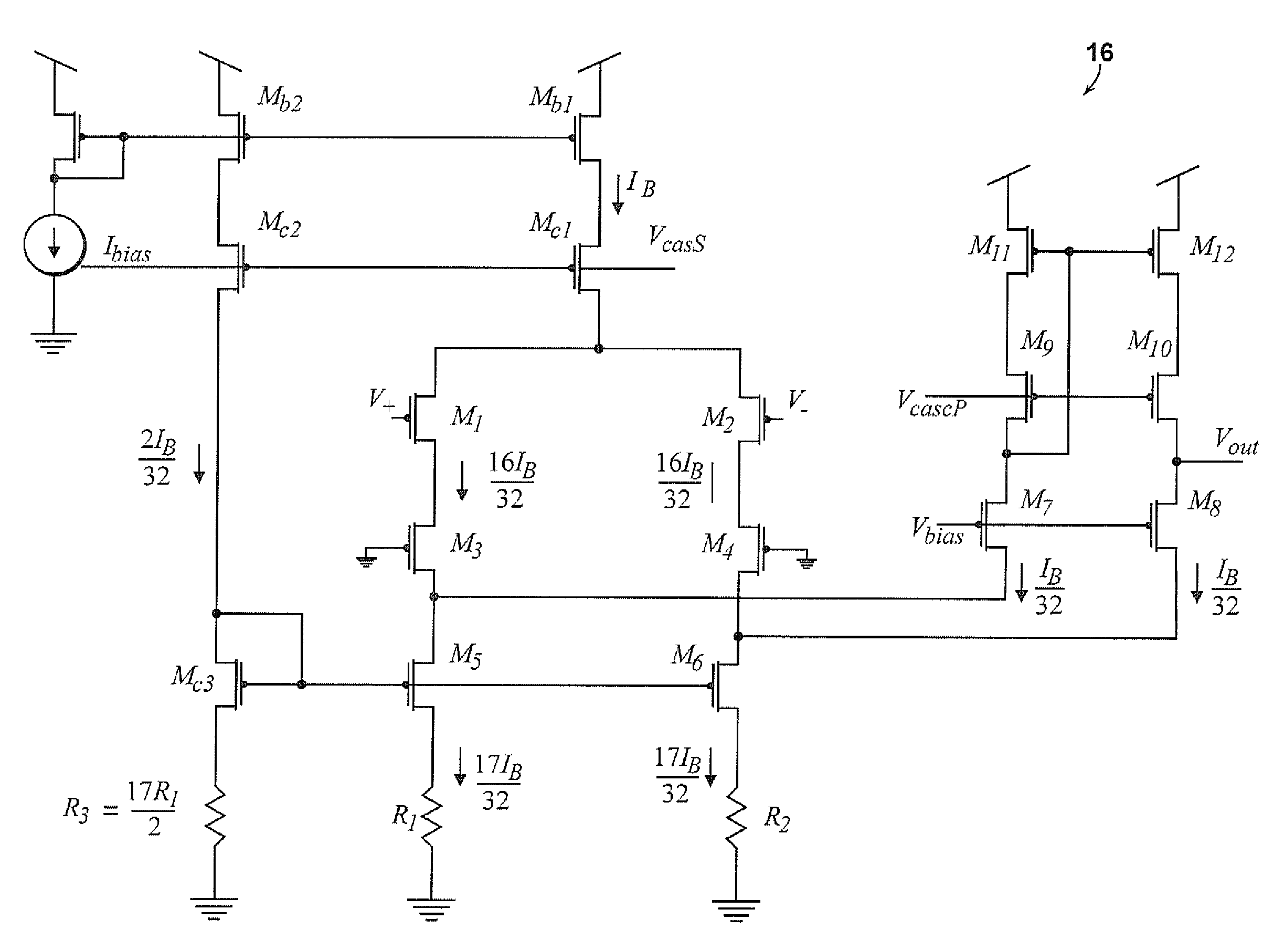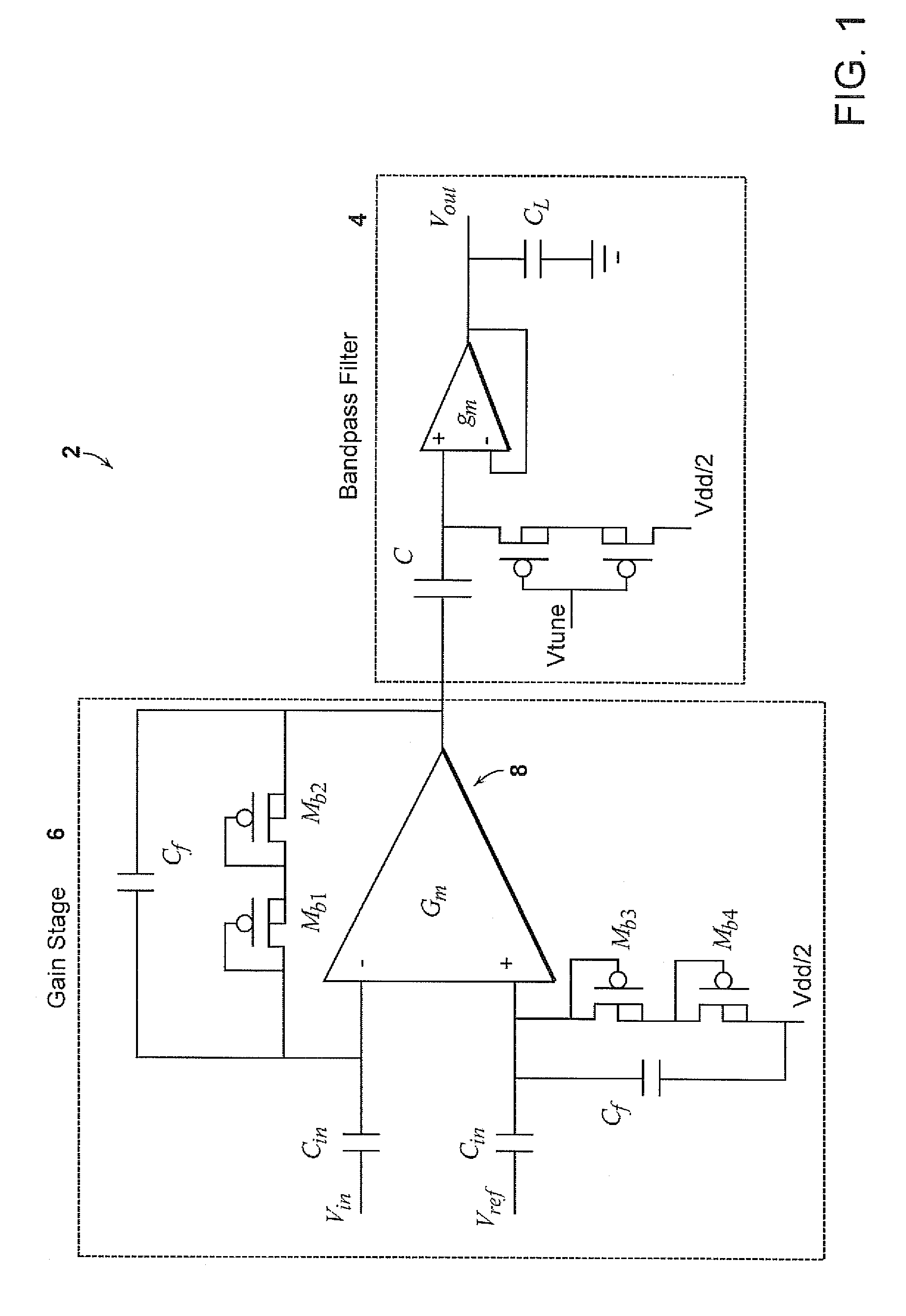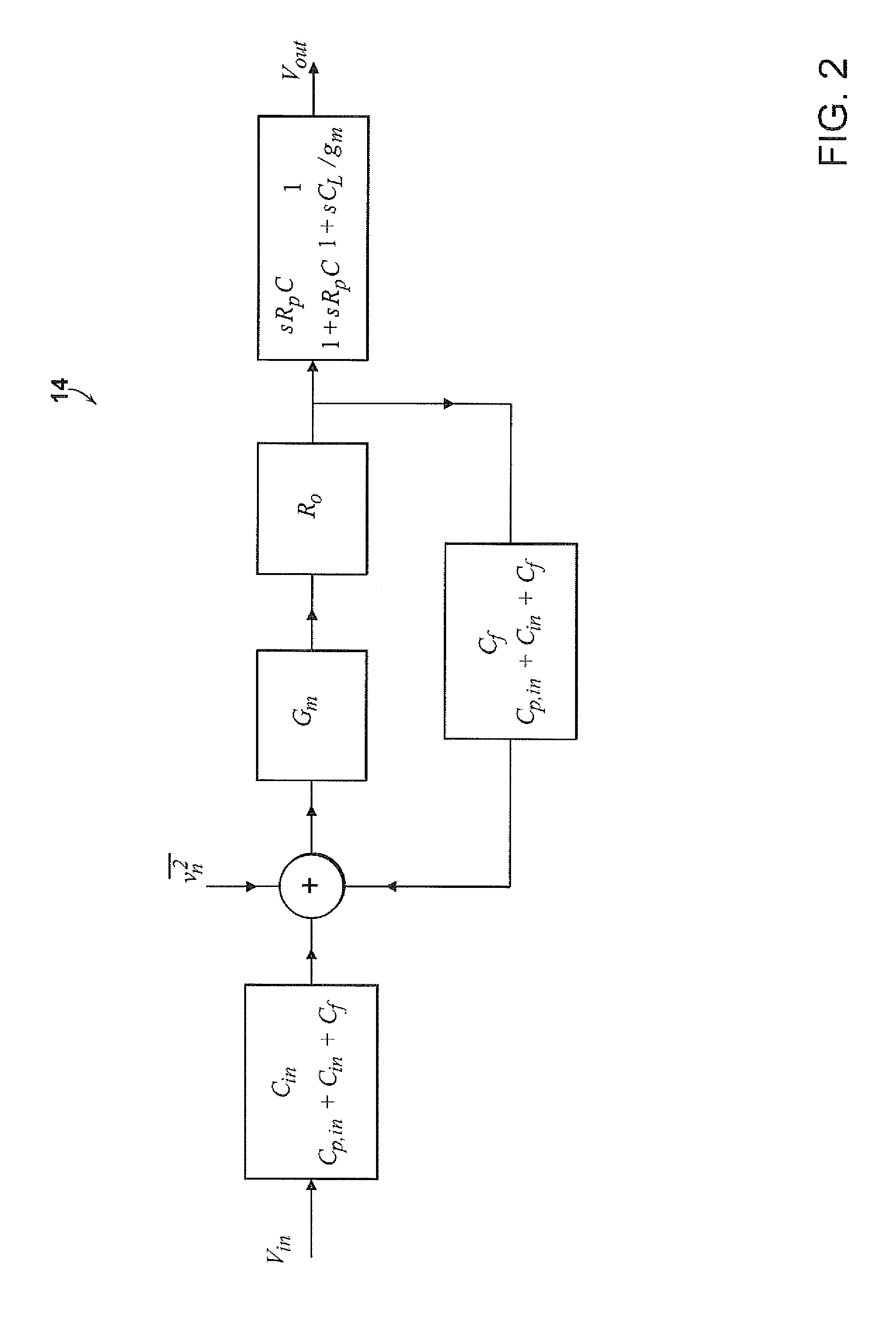Micropower neural amplifier with adaptive input-referred noise
a neural amplifier and input-referred noise technology, applied in the field of ultralow-power neural recording amplifiers, can solve the problems of limiting the power efficiency of the multi-electrode system, the power required for neural amplifiers can become the limiting factor of the whole multi-electrode system, and the amplifier power cost is steep, so as to achieve low noise gain and low noise gain. , the effect of low noise gain
- Summary
- Abstract
- Description
- Claims
- Application Information
AI Technical Summary
Benefits of technology
Problems solved by technology
Method used
Image
Examples
Embodiment Construction
[0028]The invention involves an ultra-low-power neural recording amplifier. The amplifier appears to be the lowest power and most energy-efficient neural recording amplifier reported to date. Low-noise design techniques are used that help the neural amplifier achieve input-referred noise that is near the theoretical limit of any amplifier using a differential pair as an input stage.
[0029]The overall schematic of a neural amplifier 2 is shown in FIG. 1. The neural amplifier 2 includes a bandpass filter stage following a gain stage 6 to shape the passband of the amplifier 2. The low-frequency high-pass cutoff of the gain stage 6 is created by the MOS-bipolar pseudoresistor element formed by Mb1-Mb2 and the capacitance Cf. The capacitive feedback formed by Cf and Cin sets the midband gain of the amplifier 2 to approximately 40.8 dB. The high-pass cutoff and the low-pass cutoff frequencies of the amplifier 2 can be adjusted via Vtune and the bias current of the gm-OTA in a bandpass-filt...
PUM
 Login to View More
Login to View More Abstract
Description
Claims
Application Information
 Login to View More
Login to View More - R&D
- Intellectual Property
- Life Sciences
- Materials
- Tech Scout
- Unparalleled Data Quality
- Higher Quality Content
- 60% Fewer Hallucinations
Browse by: Latest US Patents, China's latest patents, Technical Efficacy Thesaurus, Application Domain, Technology Topic, Popular Technical Reports.
© 2025 PatSnap. All rights reserved.Legal|Privacy policy|Modern Slavery Act Transparency Statement|Sitemap|About US| Contact US: help@patsnap.com



